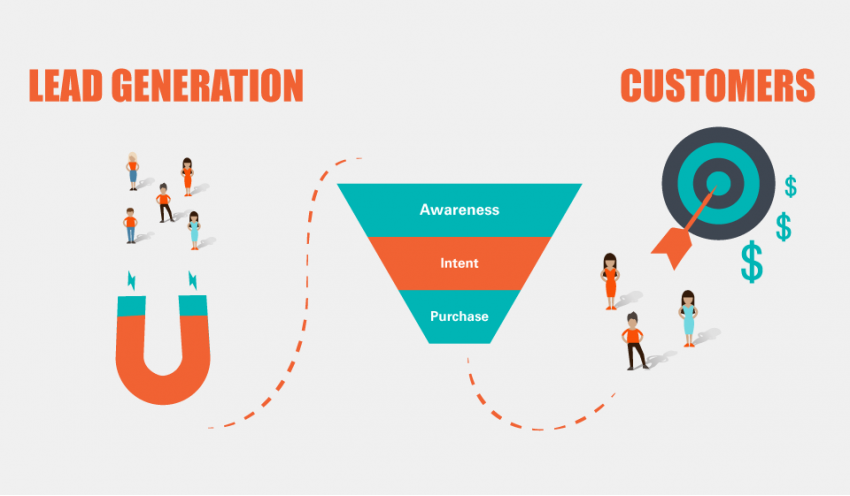Sales Math: Key Metrics for Each Funnel Stage (Updated 2021)
Web advertising becomes more efficient each year. To make quality investments in web advertising, it is important to know the basic concepts helping you become well-versed in this area. They are leads, conversions, ROAS, ROI, KPI, as well as formulas to calculate investment return.
Key terms guide
First of all, let's define key terms used in sales math
Lead is a term that identifies your company’s buyer who has responded to a specific marketing ploy. In other words, “lead” is a customer showing interest. Lead generation cost is an important metric in sales. This data is necessary to calculate marketing expenses.
We will explain this concept using our website as an example. For instance, you invest $2000 per year to purchase the BiMedis PRO account. This account attracts 100 buyers — your company’s potential customers. Hence, one lead costs you $2000/100 = $20.

Conversion implies, as a rule, that part of visitors to your website who perform the required target action. Commonly, the target actions include opening an important website page, making a request, purchasing a product, etc.
Sales funnel is a concept that reveals lead generation rates and visitor conversion into regular customers.
In the upper part of the funnel, there is the greatest number of people who are interested in the product. These are all users with whom the contact was established. The funnel gradually narrows down, and the number of interested people becomes smaller (some customers were not ready to buy, and some part of the audience conducted a search inquiry exclusively with a purpose to find data on the product). Through this process, the funnel comes down to the most desirable moment for us — the purchase itself.
Depending on the company specifics, the sales funnel can consist of a different number of stages, but on average, it has four conventional segments:
- people who get acquainted with the company and its products;
- people who show interest;
- users who had repeated contacts with the company — at this stage, they formed a need for purchase;
- buyers who made a purchase.

Using the BiMedis website, you can narrow down the top segment of the funnel because our platform has already generated your target audience and revealed all product prices. Managers contact each buyer to drop out those customers who are not ready to buy. Consequently, you get to the next stage of the funnel comprising the highest quality leads, and that significantly accelerates the process of buying equipment or selling it.
The ROAS and ROI terms are closely interrelated. ROAS stands for the return on advertising spend while ROI means the return on investment ratio. At first glance, the concepts are equivalent, but the difference between ROAS and ROI is in the way you account for the cost of advertising investments. In simpler terms, when considering ROAS, you estimate your advertising campaign profitability. The concept of ROI includes all advertising and accompanying expenses.
For example, your advertising expenses were $5,000. As a result of the advertising campaign (AC), you have sold 20 products for $6,000 each.
ROAS will be calculated as follows: AC income/AC expenses.
In our case ROAS = 20*6,000/5,000 = 24
This means that every dollar spent has brought you a total return of $24. To understand it better, we can set this indicator in percentage terms, multiplying 24 by 100 and receiving the ROAS indicator that equals 2,400%.
The ROI indicator will always be lower than ROAS, as we calculate ROI, taking into account the accompanying expenses. However, it will always be closer to reality. Here is the formula used to calculate ROI:
ROI = (income - (expenses+advertising expenses))/advertising expenses*100%
When selling ultrasound machines, you can include the following expenses to calculate ROI:
- Purchase of goods
- Pre-sale preparation
- Time spent by the manager to process leads for one sale
- Packaging
- Installation (if applies)
- Warranty risks (if the seller provides a warranty)
- Depreciation deductions if equipment stands idle at a warehouse
Example:
1. Sale of goods — $6,000
2. Purchase of goods — $3,500
3. Pre-sale preparation cost — $200
4. Time spent by the manager to process leads for one sale:
- suppose the manager needs to process 20 leads for one sale;
- the manager will phone one lead 3 times, spending 10 minutes for each call, and that makes 600 minutes spent on one sale;
- after-sales support will take another 120 minutes;
- total: 720 min = 12 hours of manager’s services;
- if the seller’s rate is $25 per hour, you will have to include another $300 for one sale.
5. To pack an ultrasound machine will cost $500
6. Installation cost (if applies) — none
7. Warranty risks costs — 12% = $175
8. Depreciation deductions, if equipment stands idle at a warehouse, may constitute 0.5% of the price, i.e. $150
Investments in the BiMedis PRO account equal $2000 per year, and the user will make 5 such sales
Income = (6,000 – 3,500 - 200 - 300 - 500 - 175 - 150)*5 = 1,175*5 = 5,875
9. BiMedis platform ROI = (5,875 – 2000)/2000*100% = 194%
10. Thus, investing $1 in the BiMedis platform, you generate $246 return.

Calculate your metrics on all your customer acquisition channels. By doing so, you will see which of the channels will be profitable for your company. However, if your type of business is medical equipment sales, make sure you resort to the services provided by BiMedis to experience first-hand that it is quick and profitable to sell with BiMedis!
24.06.2021